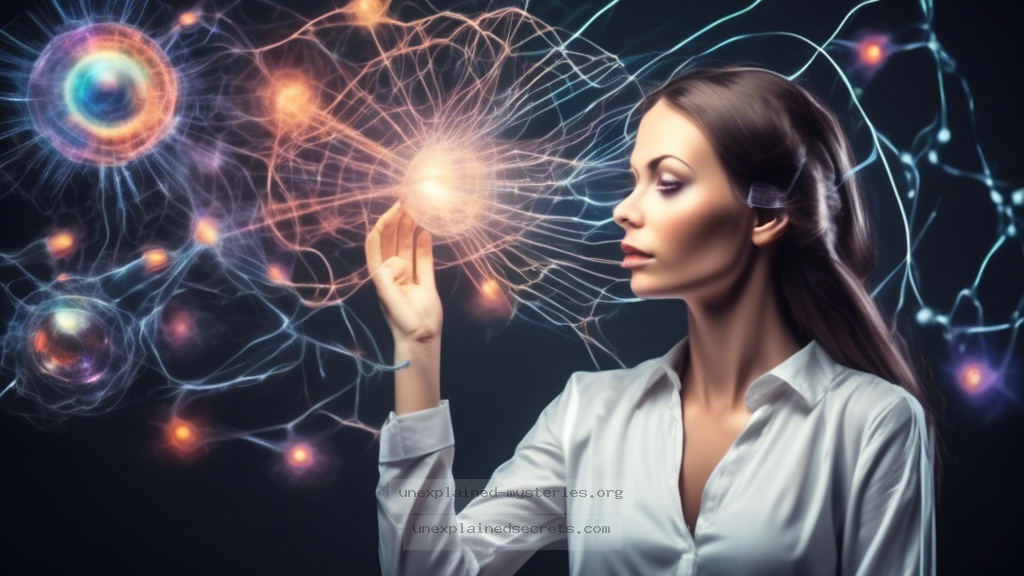Can Telepathy Be Proven Through Scientific Research and Laboratory Experiments?
Can Telepathy Be Proven Through Scientific Research and Laboratory Experiments?
The enigma of telepathy—communication between minds without the use of known human senses—has captivated human imagination for centuries. From ancient texts to modern psychological studies, telepathy is a mystery that straddles the line between science and the paranormal. But what if science could provide evidence of telepathy through controlled laboratory experiments? This question matters because it challenges our understanding of human consciousness and communication, and it holds potential implications for fields such as psychology, neuroscience, and even quantum physics. In this post, we will delve into the intricacies of telepathy research, examining historical context, core theories, practical implications, and ongoing studies.
Historical Context of Telepathy Research
The study of telepathy dates back to the late 19th century, coinciding with the rise of spiritualism and the advent of psychology as a formal science. Pioneers like Sigmund Freud and Carl Jung explored the depths of the unconscious mind, albeit without a focus on telepathy. The term “telepathy” was coined by Frederic Myers—a British psychologist and co-founder of the Society for Psychical Research (SPR)—in 1882. Myers believed that telepathy was a form of communication that transcended the physical realm, suggesting that the mind could connect to other minds through an unexplained mechanism.
In the 20th century, telepathy research gained traction, particularly during the Cold War era. The U.S. government invested in various projects, including the infamous Stargate Project, which aimed to explore psychic phenomena for military applications. Notably, researchers like Joseph B. Rhine conducted experiments at Duke University, where he sought to measure telepathic abilities through card guessing games. These early studies laid the foundation for contemporary telepathy research, bridging the gap between skepticism and intrigue.
Core Concepts and Theories Surrounding Telepathy
At the heart of telepathy research lies the concept of non-local consciousness—the idea that consciousness can exist independently of the physical body. This theory suggests that thoughts, emotions, and intentions can be transmitted between individuals without conventional sensory pathways. One of the most discussed frameworks is the “Quantum Consciousness” theory, posited by physicist David Bohm, which integrates quantum mechanics into the understanding of consciousness.
Another influential theory is the “Collective Unconscious,” introduced by Carl Jung. Jung believed that shared memories and experiences exist within a collective psyche, allowing for intuitive connections between individuals. This perspective opens the door for telepathic interactions, where individuals tap into this shared pool of consciousness.
Laboratory Evidence: Key Experiments and Findings
Despite its controversial nature, several experiments have attempted to provide evidence of telepathy in laboratory settings. One of the most notable is the Ganzfeld experiment, which originated in the 1970s. In this study, a sender and receiver are placed in separate rooms, with the sender attempting to transmit a visual image to the receiver while the receiver is placed in a state of sensory deprivation.
Results from various Ganzfeld experiments have shown statistically significant success rates, suggesting that subjects could identify images being “sent” to them at rates higher than chance. However, critics argue that methodological flaws and lack of replication have marred the reliability of these findings.
| Experiment | Participants | Success Rate | Critiques |
|---|---|---|---|
| Ganzfeld Experiment | Sender-Receiver Pairs | 25-30% | Methodological flaws, lack of replication |
| Card Guessing Tests | Individual Test Subjects | 20% (expected 5%) | Questionable controls |
Real-World Examples of Telepathy
Through history, there have been numerous accounts of telepathic experiences, often reported by twins or close family members. One well-known case involves the identical twins Jim and Jim Lewis, who were separated at birth and later reconnected as adults. Both had lived remarkably similar lives, exhibiting parallel interests, career choices, and even health issues without any prior knowledge of each other.
Another intriguing example is the story of a woman who felt a sudden surge of panic and urgency to contact her husband, only to learn later that he had been in a serious accident at the exact moment she felt the connection. Such anecdotal evidence fuels ongoing debates about the nature of telepathy and its potential to transcend physical boundaries.
Alternative Perspectives on Telepathy
While many researchers are optimistic about the potential of telepathy, others remain skeptical. Critics often argue that the results from telepathy experiments can be attributed to chance, psychological factors, or even the power of suggestion. For instance, cognitive biases can lead individuals to perceive connections that do not exist.
Additionally, some scientists propose that what we label as “telepathy” may be rooted in advanced forms of non-verbal communication, such as body language or subtle cues that individuals subconsciously pick up on. This perspective emphasizes the need for rigorous scientific standards in telepathy research, ensuring that claims are substantiated by empirical evidence rather than anecdotal accounts.
Common Misconceptions and Clarifications
Misconception: Telepathy is purely a paranormal phenomenon with no scientific basis.
Clarification: While many aspects of telepathy are still unexplained, there are scientific investigations exploring the phenomenon, though the results remain controversial.
Misconception: All telepathic experiences are intentional.
Clarification: Many accounts of telepathy occur spontaneously, without any conscious effort from the individuals involved.
Best Practices for Investigating Telepathy
For those interested in exploring telepathy, whether scientifically or personally, several best practices can enhance the investigation. Firstly, maintaining a rigorous methodological approach is essential. This includes ensuring proper controls, randomization, and replication of experiments to validate findings.
Secondly, documenting experiences meticulously can provide valuable data. Keep a journal of any telepathic experiences, noting the context, feelings, and outcomes. This can help identify patterns and contribute to broader discussions on the topic.
Lastly, engaging with both skeptics and proponents of telepathy can foster a well-rounded understanding of the phenomenon. Collaborating across disciplines—such as psychology, neuroscience, and quantum physics—may unveil new insights and methodologies for exploring telepathy.
Future Developments in Telepathy Research
The future of telepathy research is ripe with potential. As technology advances, new methodologies may emerge for studying the phenomenon more rigorously. For instance, brain imaging techniques such as fMRI and EEG may provide insights into the neural correlates of telepathic experiences, allowing researchers to explore the physiological aspects of this mysterious communication.
Additionally, the intersection of quantum physics with consciousness studies may yield groundbreaking discoveries. As scientists like physicist Amit Goswami propose, understanding consciousness as a fundamental aspect of the universe could redefine our approach to telepathy and psychic phenomena.
Conclusion: The Ongoing Mystery of Telepathy
In summary, the question of whether telepathy can be proven through scientific research and laboratory experiments remains open and intriguing. While historical accounts, modern studies, and anecdotal evidence point to the possibility of telepathic communication, rigorous scientific validation is still needed. As we explore the depths of human consciousness, our understanding of telepathy may evolve, inviting us to question the very fabric of reality and our connections with one another.
Telepathy research continues to challenge our perceptions of communication, consciousness, and the potential limitations of the human experience. With each new discovery, we inch closer to unraveling this captivating mystery. As we look to the future, the prospect of substantiating telepathy through scientific inquiry remains an exciting frontier in both the realms of science and the paranormal.
Other Articles
Recent Posts
- What Happened to Flight MH370? The Conspiracy Theories That Still Haunt Us
- What Secrets Lurk Within the Walls of the Infamous Trans-Allegheny Lunatic Asylum?
- What Evidence Supports the Existence of Bigfoot in the Pacific Northwest?
- What Happened to the Indus Valley Civilization? Unraveling the Mysteries of Ancient Urban Life
- Can Telepathy Be Scientifically Proven Through Laboratory Evidence?







